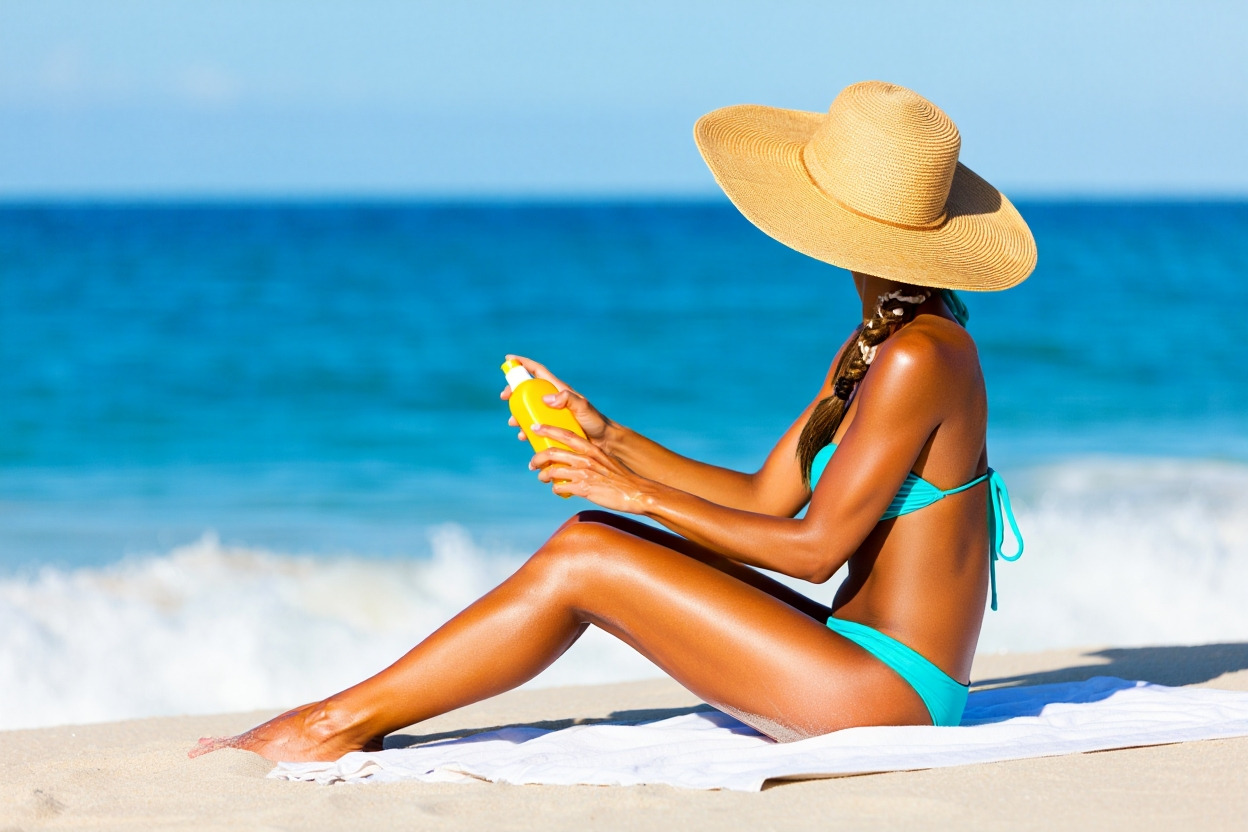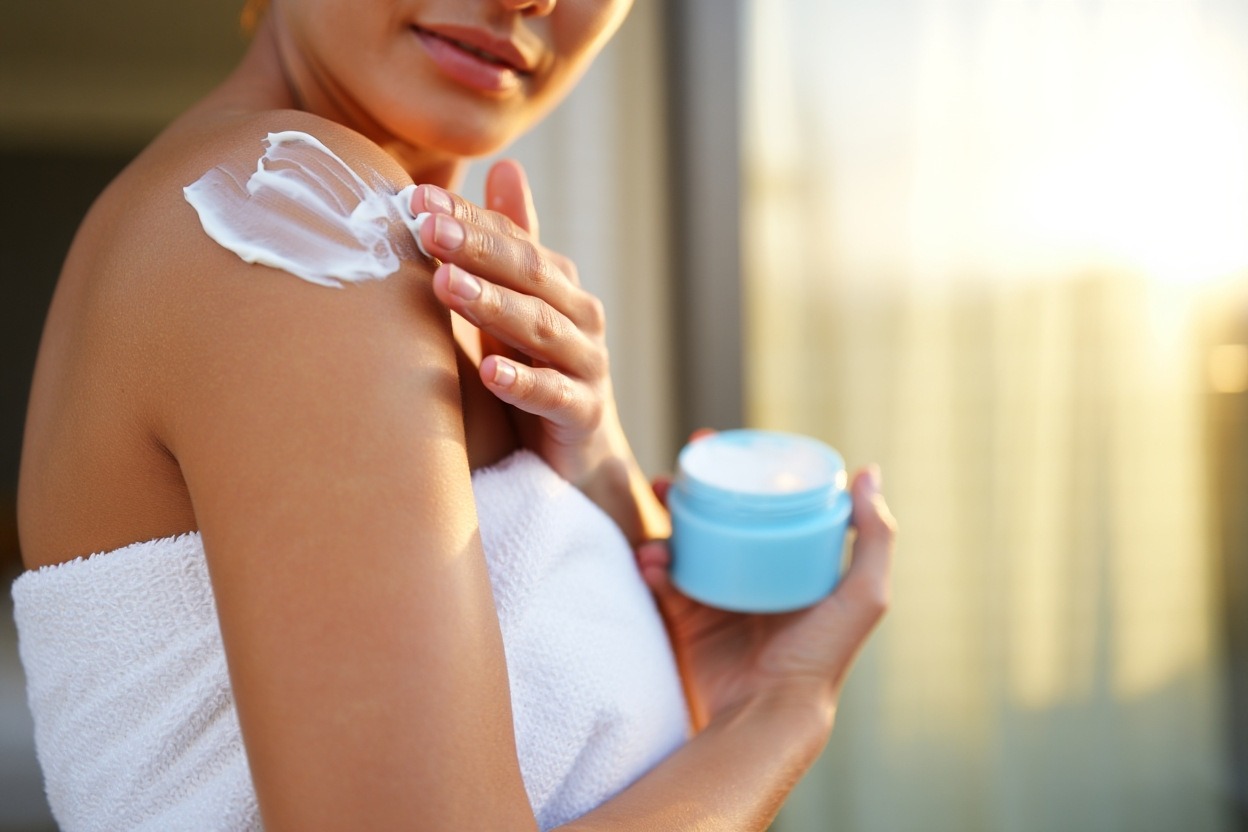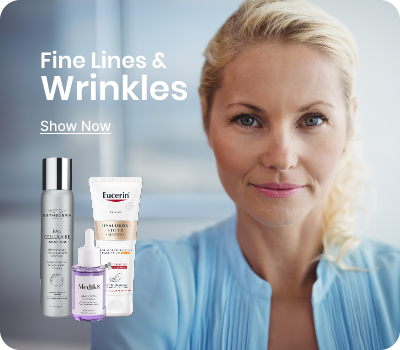
There’s nothing quite like that sun-kissed glow—the way it warms your complexion and gives you that effortless, healthy radiance. But behind every beautiful tan lies a delicate balance between enjoying the sun and protecting your skin from its hidden dangers. Whether you’re lounging on a tropical beach or soaking up a summer afternoon, understanding the science of tanning, the nuances of UV exposure, and the art of aftercare can make all the difference between a luminous glow and lasting damage.
In this guide, we’ll walk you through everything you need to know to tan smarter, not harder. From decoding UVA and UVB rays to mastering sunscreen application, from nourishing your skin pre- and post-sun to debunking dangerous tanning myths, we’re here to help you achieve that perfect bronze—safely. Because a truly radiant tan isn’t just about colour; it’s about maintaining your skin’s health, resilience, and youthful vitality for years to come. Let’s dive in.
The Skin and the Sun: Understanding Tanning at a Cellular Level
Sunlight, the golden architect of a sun-kissed glow, is both a friend and a foe. At its core, tanning is a biological defence mechanism. When ultraviolet (UV) rays from the sun penetrate the skin, they trigger melanocytes—the skin’s pigment-producing cells—to produce more melanin. This pigment is then distributed across the epidermis to absorb and dissipate the radiation, thereby protecting the skin’s DNA from damage.
Tanning Truths: How UVA & UVB Rays Impact Your Skin’s Health
There are two primary types of UV radiation that affect the skin: UVA and UVB. UVA rays, which account for about 95% of the UV radiation that reaches the Earth, penetrate deeply into the dermis. They are the culprits behind premature ageing, wrinkling, and can even initiate genetic mutations. UVB rays, though less prevalent, are significantly more intense and responsible for causing sunburn. Both types contribute to skin cancer risk, which is why comprehensive sun protection is essential.
Natural tanning walks a razor-thin line between enhancement and harm. A healthy tan should not involve burning, peeling, or prolonged unprotected exposure. There’s a vast difference between a gradual golden hue achieved with care, and the leathery, mottled aftermath of sun abuse. Understanding this science equips you to pursue a luminous tan without sacrificing your skin’s long-term health.
Preparation is Key: Pre-Tan Skincare for a Healthier Glow
A radiant tan begins with preparation:
- Exfoliate for an even base - start by gently sloughing away dead skin cells with a mild physical scrub or a chemical exfoliant (like lactic or glycolic acid). This step removes uneven texture, ensuring your tan develops smoothly and lasts longer. Skipping exfoliation can lead to patchiness, streaks, or faster fading.
- Hydrate for a deeper, more even glow - Well-moisturised skin tans more uniformly and retains colour better. In the days leading up to sun exposure, apply a lightweight, non-comedogenic moisturiser. Key ingredients like hyaluronic acid (for deep hydration), panthenol (to soothe), and ceramides (to strengthen the skin barrier) help maintain moisture balance—without blocking UV absorption.
Nature’s SPF: Nutrients That Prep Your Skin for Sun Exposure
Internal care plays a supporting role as well. Nutrients such as beta-carotene, found in carrots, sweet potatoes, and spinach, may enhance the skin’s natural tan. Lycopene, abundant in tomatoes and watermelon, acts as a natural SPF booster, offering mild protection from within. Supplements such as astaxanthin or omega-3 fatty acids can also bolster skin resilience and reduce inflammation after sun exposure.
Sunscreen Strategy: How to Choose and Apply It Correctly
The cornerstone of any sun care regimen is sunscreen, and knowing how to choose and use it is paramount. SPF, or Sun Protection Factor, measures how long you can stay in the sun without burning compared to unprotected skin. For example, SPF 30 means you can stay in the sun 30 times longer without burning—theoretically. However, efficacy varies based on application, sweating, swimming, and environmental conditions.
Fair-skinned individuals or those prone to burning should opt for SPF 50 or higher. Darker skin tones, while less susceptible to burns, still require protection to guard against UV-induced hyperpigmentation and skin ageing. Choose broad-spectrum formulas that protect against both UVA and UVB rays.
Mineral vs. Chemical Sunscreens: Which One Really Protects Your Skin Best?
The choice between mineral and chemical sunscreens remains a hot topic among dermatologists. Each type offers unique benefits and drawbacks depending on your skin type and lifestyle:
- Mineral (Physical) Sunscreens: Formulated with natural active ingredients like zinc oxide and titanium dioxide, these sunscreens create a protective barrier on the skin's surface that reflects and scatters UV rays. They provide immediate protection upon application and are less likely to clog pores, making them ideal for sensitive, acne-prone, or rosacea-prone skin. However, they can leave a white cast, especially on deeper skin tones, and may feel heavier on the skin.
- Chemical Sunscreens: These contain organic compounds like avobenzone, octocrylene, or oxybenzone, which absorb UV radiation and convert it into heat before releasing it from the skin. They tend to be lightweight, fast-absorbing, and invisible on all skin tones, making them popular for daily wear. However, some chemical filters may cause stinging or redness in reactive skin types, and certain ingredients (like oxybenzone) have raised environmental concerns regarding coral reef safety.
The best choice? If you have sensitive skin or prefer a natural approach, mineral sunscreen may be your safest bet. If you want an undetectable finish for daily wear, chemical options might work better—just check for skin tolerance and reef-safe formulas.
SPF Like a Pro: The Real Rules for Sunscreen That Works
Most of us think we're applying enough sunscreen—but studies show people typically use less than half the recommended amount. To properly shield your skin:
- Use More Than You Think: Aim for a full shot glass (about 2 tablespoons) to cover your entire body. For the face alone, a nickel-sized dollop ensures full coverage. Skimping leaves gaps where UV rays can penetrate.
- Reapply Religiously: Sunscreen breaks down over time—especially under sunlight. Reapply every 2 hours, and immediately after swimming, sweating, or towel-drying. Even "water-resistant" formulas lose effectiveness after 40–80 minutes in water.
- Layer Smartly: For optimal protection, apply moisturiser first (let it absorb), follow with sunscreen (wait 2–3 minutes before makeup), top with makeup or oils—never mix sunscreen with other products, as this dilutes its efficacy.
Smart Tanning Techniques: Tan Gradually, Tan Safely
There’s an art to tanning intelligently. Timing, duration, and positioning all influence the outcome. The safest window for sun exposure is before 11 a.m. and after 4 p.m., when UV rays are less aggressive. Midday sun, though tempting, poses the highest risk for burns and long-term damage.
Tanning by the Clock: Timing Your Sun Exposure for Glow Without Damage
Duration in the sun should always be dictated by your skin’s phototype. Fair skin may require as little as 10 to 15 minutes of exposure to begin tanning, while deeper skin tones can tolerate longer sessions. Nevertheless, no skin type is immune to damage. The key is moderation—gradual exposure over multiple days yields better results than an all-day sun binge.
Rotate, Rest, Cover: The Trifecta for a Healthy, Streak-Free Tan
Rotate body positions regularly to avoid uneven tanning and pressure marks. Use shade breaks and breathable clothing to allow your skin time to cool and regenerate. Always have a wide-brimmed hat, sunglasses, and cover-up at hand to prevent overexposure, especially on sensitive areas like the face, shoulders, and chest.
Aftercare Essentials: Nourish and Repair Post-Sun

Tanning doesn’t end when you leave the beach. In fact, post-sun care is where the real skin-saving magic happens. Rehydrating the skin is essential. UV exposure depletes moisture and weakens the skin barrier.
Beyond Aloe Vera: The Science of Healing Sun-Stressed Skin
After sun exposure, your skin needs immediate TLC to recover from UV stress and lock in that golden tan. Here’s your science-backed recovery routine:
- Step 1 - Cool & Hydrate: apply a chilled, fragrance-free lotion or gel within 15 minutes of sun exposure to soothe burns/redness with aloe vera (anti-inflammatory) or calendula (healing), rebuild moisture with glycerin or hyaluronic acid to prevent peeling, and reduce stinging with menthol or cucumber extract (optional for extra cooling).
- Step 2 - Repair & Regenerate: target deeper damage with powerhouse ingredients like Panthenol (B5 - calms inflammation and speeds wound healing), Allantoin (softens skin and promotes cell turnover), and Niacinamide (B3 - reduces blotchiness and reinforces the skin barrier).
- Step 3 - Neutralise UV Aftermath: combat lingering free radicals with antioxidants like Vitamin E (repairs lipid barrier and prevents premature ageing), Green tea extract (Fights DNA damage and soothes redness), and Astaxanthin (a super-antioxidant for long-term recovery).
Pro Tip: Keep your post-sun products in the fridge for an extra cooling effect!
A post-tan cold shower—rather than a hot bath—helps close pores, reduces inflammation, and preserves your tan. Avoid harsh soaps or scrubbing for the next 48 hours. Pat your skin dry rather than rubbing, and continue moisturising daily to maintain suppleness and prolong your golden hue.
Tanning Disasters: 3 Mistakes That Age (and Endanger) Your Skin
Tanning Mistake 1: Overexposure
- Baking for hours – Even with SPF, prolonged UV exposure causes cumulative DNA damage.
- Sunburning – A single burn doubles melanoma risk and triggers premature ageing.
- Peeling cycles – Repeated burns and flaking destroy tan uniformity and leave skin patchy.
Tanning Mistake 2: Misusing Tanning Oils & Accelerators
- Using oils without SPF – Many amplify UV absorption but offer zero protection.
- Assuming "bronzers" protect – Most just stain skin temporarily while UV damage continues.
- Skipping sunscreen – Always layer oils over broad-spectrum SPF—never instead of it.
Tanning Mistake 3: Believing Tanning Beds Are "Safer"
- UVA bombardment – Beds emit 12x more UVA than sunlight, penetrating deep into collagen.
- Carcinogenic effects – WHO ranks tanning beds alongside cigarettes and asbestos for cancer risk.
- False "base tan" safety – A pre-vacation bed tan provides only SPF 3 protection.
A golden glow should never come at the cost of your skin’s health. Moderation, SPF, and smart alternatives (like self-tanners) are your best allies.
Tanning for All Skin Types: Customising Your Routine
Tanning routines are not one-size-fits-all:
- Fair skin types (phototype I-II) are most vulnerable to burning and should prioritise high SPF, brief exposure, and extended time in the shade. Gentle self-tanners or gradual tanning lotions can supplement limited sun exposure.
- Medium skin tones (phototype III-IV) can usually tan more easily but still require diligent sun protection. They should look for broad-spectrum SPF 30 or higher and maintain hydration to avoid peeling.
- Deep skin tones (phototype V-VI), while naturally more protected due to higher melanin levels, are still susceptible to UV-induced hyperpigmentation and photoageing. Sunscreen is essential, especially for evening out skin tone and preventing dark patches.
- Sensitive skin may benefit from fragrance-free, hypoallergenic sunscreens with soothing agents like chamomile or centella asiatica. Acne-prone individuals should use non-comedogenic sunscreens and avoid heavy oils that can exacerbate breakouts.
Maintaining a Healthy Glow: Daily Habits That Support Skin Radiance
Radiant, healthy skin is the result of consistent, supportive habits. Daily sun-safe practices—such as wearing SPF every day, even when it's cloudy, and seeking shade when outdoors—help preserve your tan while protecting your skin's integrity
Internal hydration is crucial. Drinking plenty of water keeps skin plump and helps maintain the elasticity that supports a long-lasting tan. Incorporate antioxidant-rich foods like berries, leafy greens, and nuts to nourish the skin from within.
A gentle, regular exfoliation schedule (every 3–5 days) can prevent build-up and help your tan fade evenly, avoiding patchiness. Moisturising twice daily with emollient-rich creams or after-sun lotions supports skin resilience.
Skin-Safe Glow: Why Self-Tanners Are Your Skin’s Best Friend
Gone are the days of orange streaks and fake-looking tans—today’s self-tanners are skincare-meets-sun-kissed perfection. Modern formulas not only provide natural, customisable colour but often include hydrating hyaluronic acid, antioxidant vitamin E, skin-smoothing AHAs, and nourishing oils for a radiant finish. For beginners, gradual tanners (like lotions or milks) offer foolproof, buildable colour over days. For deeper tones or instant results, express mousses develop in just 1–4 hours with salon-quality depth. Prep is everything: exfoliate 24 hours prior (focus on knees/elbows!), shave, and skip moisturiser right before application to prevent patchiness. Always use a tanning mitt for flawless blending—especially along hairlines and wrists.
But the real magic lies in maintenance. To extend your faux glow, moisturise daily with a fragrance-free lotion (scented products can break down DHA, the tanning agent). For face touch-ups, try a tanning serum or tinted drops mixed with moisturiser. Cool showers preserve colour longer than hot ones, and gentle, sulfate-free cleansers prevent premature fading. Unlike sunbathing, self-tanners deliver zero UV damage—meaning you get all the glow with none of the wrinkles or risk. It’s the ultimate win-win for skin that looks sun-kissed without being sun-damaged.
Conclusion: Embrace the Sun Responsibly
Cultivating a beautiful, luminous tan does not require reckless exposure or harmful shortcuts. With a balanced routine rooted in knowledge, preparation, and care, it's possible to enjoy the sun's warmth while safeguarding your skin's health. Consistency and mindfulness form the backbone of a responsible sun care regimen. Whether you’re basking on the beach, lounging poolside, or simply stepping out for errands, every exposure counts—and so does every layer of protection.
Embrace the glow, but do so with respect for your skin. When sun care becomes a habit—not an afterthought—you not only enhance your complexion but invest in its vitality for years to come.





